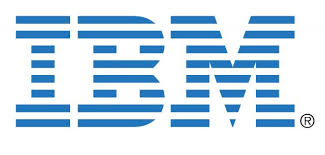Making Tech for Good: Project OWL
The winner of the first Call for Code Global Challenge keeps people connected after disasters.
As featured in IBM's 2018 Corporate Responsibility Report
Hurricane Maria hit Puerto Rico with enormous force in 2017, killing thousands of citizens and leaving ruined infrastructure across the island. According to Nazario Lugo, president of Puerto Rico’s Association of Emergency Managers, one of the biggest crises in the storm’s wake was communication. Telephone service was down; the island depended on one working radio station and a lot of improvisation.
Now, a small team of developers is working to deploy a new approach that can be used for post-disaster communication. Their Project OWL (for Organization, Whereabouts, Logistics) hardware/software solution can help create a temporary, low-cost network to keep people and emergency workers in touch.
Project OWL won the first Call for Code Global Challenge, which asked developers around the world to create new tools using open sourcebased technologies for humanitarian crises. Created by David Clark, CEO of David Clark Cause, and launched by founding partner IBM, along with support from the United Nations Human Rights Office, the Red Cross and the Linux Foundation, Call for Code offers a $200,000 prize to fund the development and execution of each year’s winning effort. Call for Code’s mission is to rally developers to use their skills and the latest technologies — and to create new ones — to drive positive and long-lasting change across the world.
In the aftermath of Maria, says Project OWL team leader Bryan Knouse, “We were thinking, ‘How can we make this in a way so stupidly simple to be used that you don’t even have to think about it?’ It’s really hard to tell people who have been through a disaster, ‘Download this app, or go to this website.’”
Project OWL uses small, low-cost transmitters to create a low-frequency wifi network, which it calls “Ducklink.” (Their prototype low-power transmitters are called ducks.) In early 2019, the team traveled to Puerto Rico to pilot prototypes. The tiny transmitter boxes emit a low-frequency Wi-Fi connection that users can link to via smartphones. Once connected, a pop-up box in English and Spanish automatically appears and people can enter information including name, location, number of pets, medical needs and hazards such as fallen trees, downed power lines, fires or blocked roads. The information is relayed back through the Ducklink network and eventually to emergency officials.
During the test, Knouse’s computer dings every few minutes with messages that included names, location and details of a roving group that popped up on a map with messages such as “Help me please!” and “NEED WATER!!!” The team later met with members of a local Boys and Girls Club to introduce the technology to young users in hopes they could teach and share it with their neighbors.




